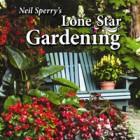Dealing With Wind

We normally think of late freezes as being our worst enemies in spring, but wind can be equally damaging. Here are some rather random guidelines.
• New foliage on established trees, shrubs may "burn" in the wind. Pears seem especially vulnerable. Affected plants will have browned or blackened leaf margins and tips. If you’re seeing that, it’s no huge problem. New growth will replace them. You really can’t do much about it anyway.
• New flower and vegetable transplants are often "soft" and succulent. Think about lush little tomato, pepper, caladium, begonia and impatiens transplants. As you’re shopping, look for plants that have stout stems that suggest they’ve been through the elements a time or two already. They’ll have much better odds of surviving sun and drying winds than tender little babies that have only known perfect greenhouse conditions. One grower I know, to make his tomato transplants tougher, actually leaves them on 16-foot flatbed trailers and grows them outdoors. They are moved into protection only on cold nights that might do them harm.
• New shade trees should probably be staked. If the tree is more than 6 or 7 feet tall, and especially if it has a thick canopy, it should be staked for its first year or two. Use three stakes equally spaced around the tree. One should be due south of the trunk to hold the tree erect in summer’s southerly breezes. Use cables to secure the tree vertically, and use pieces of burlap or short sections of old garden hose to prevent the cables from rubbing bark off the trunk. Keep the cables taut at all times.
• Last year’s trees that have tipped may need to be reset. There is no way to pull a crooked tree back into vertical. It must be dug and reset. If the tree grew very much last year, you should wait until next winter. If not, use a sharpshooter spade to lift its soil ball. Stake it after you get it plumbed. Since plants have already started growing actively, you may need to thin its top growth to prevent scorching.
• Plants you’re transporting home from the nursery need TLC. There is no way you can drive slowly enough to prevent wind burn on the highway. You must cover your plants with old sheets, wide frost cloth or with a piece of old nursery shade fabric. That is non-negotiable. Try doing it without the wrap if you insist, but you’ll learn the same hard way all the rest of us have. Oh, and secure the wrap carefully so it doesn’t blow off and cause an accident.
• Good news at last: cold injury is less likely with wind. If it falls to 32 F, tender plants will be lost. But, if it’s above 32 F, and if there is significant air motion, frost won’t form and settle on your plants’ leaves. Still, if you’re caught on the brink, it’s always best to have a canopy of frost cloth on hand to drop over your plants in emergency.

